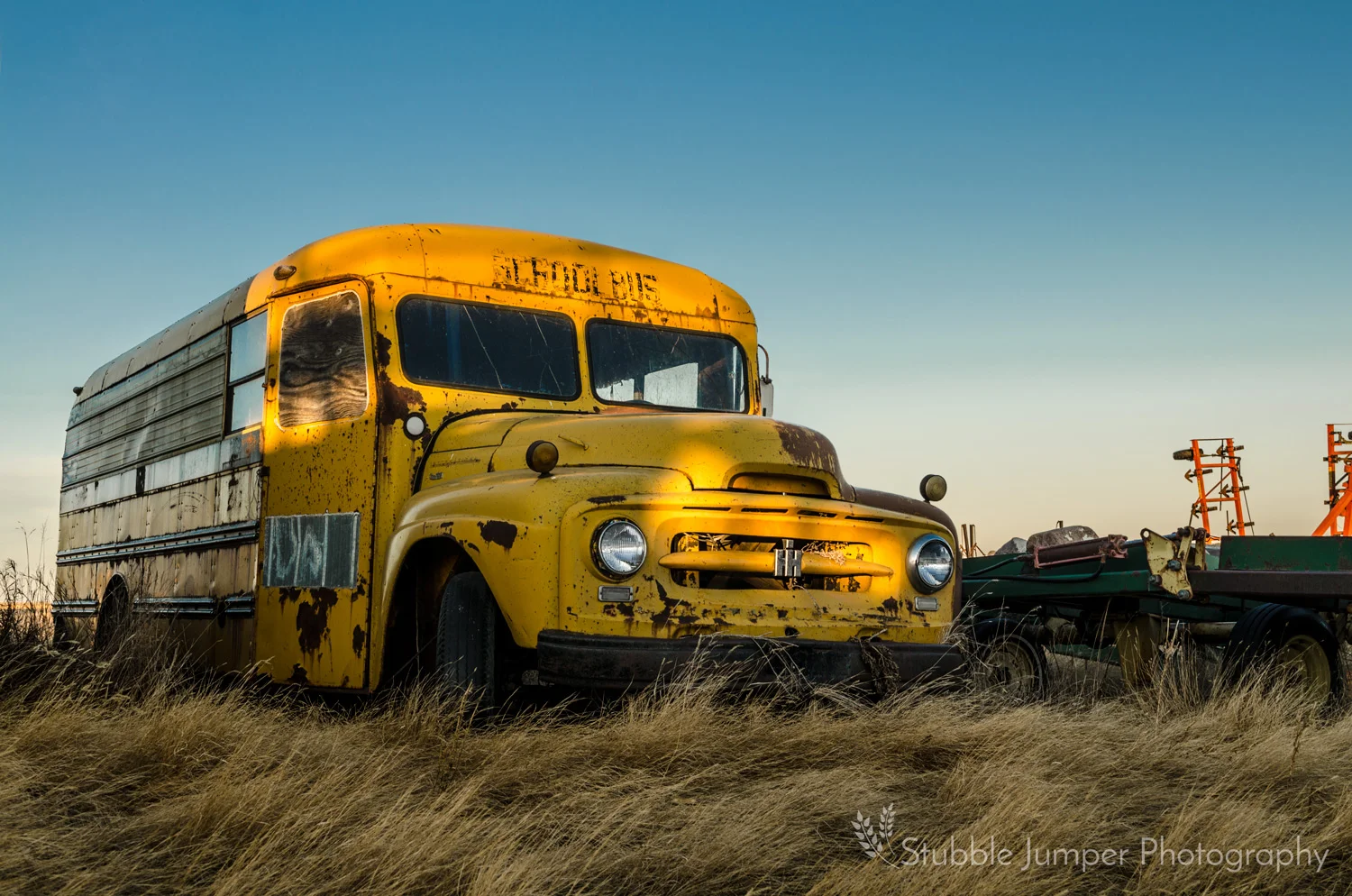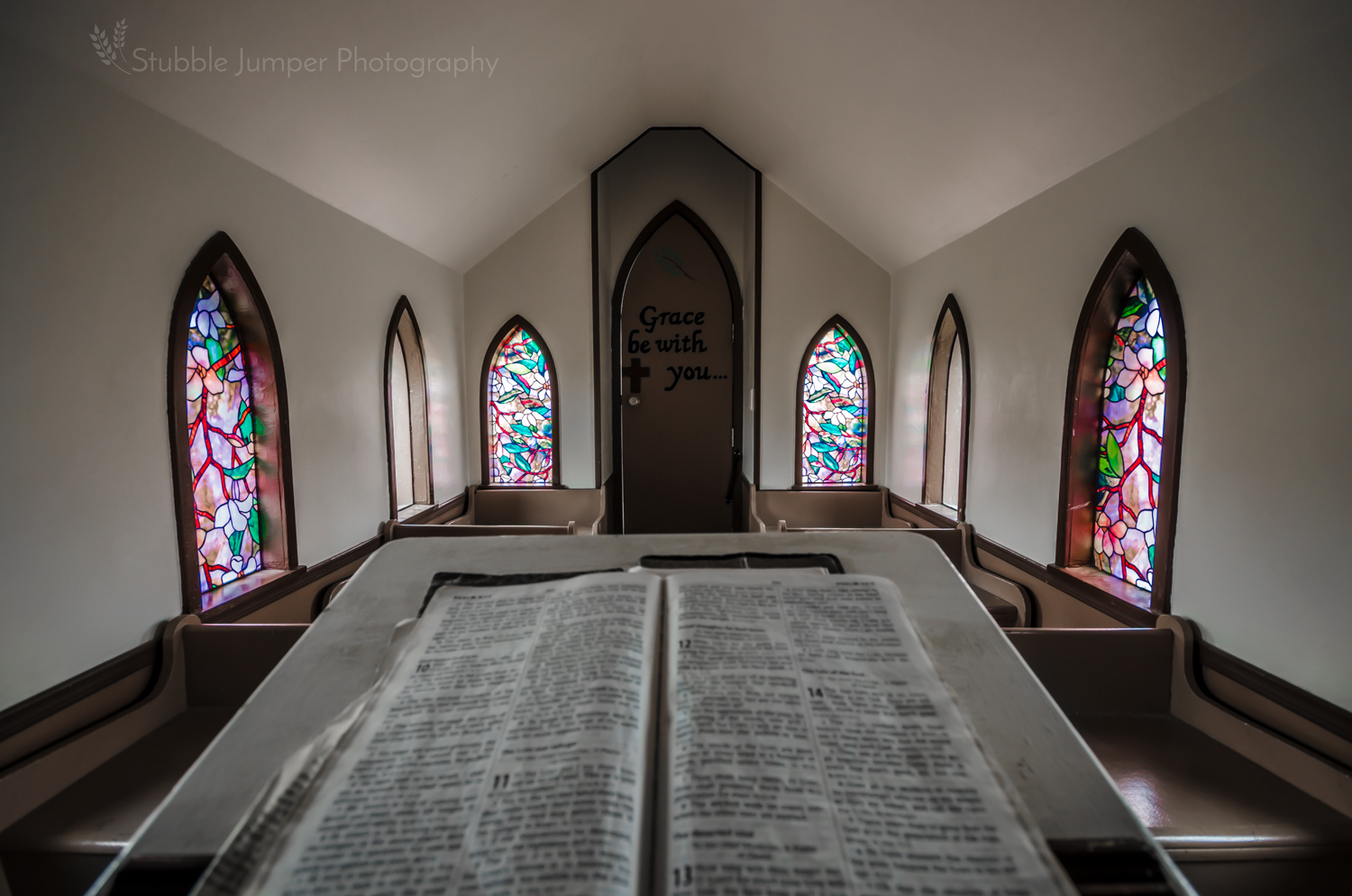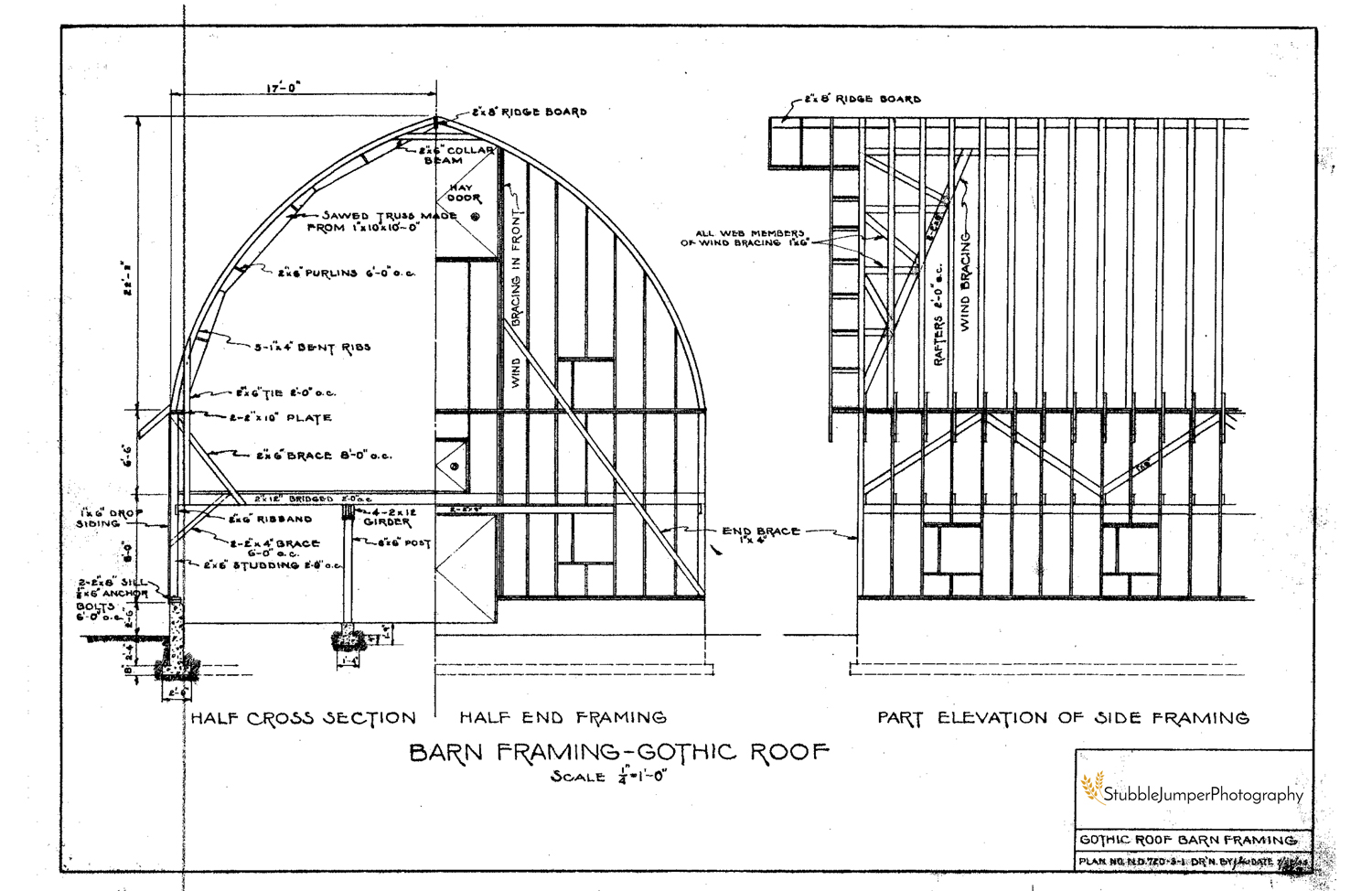In response to declining grain prices after the first world war forcing farmers to sell their crops at a loss, a co-operative was organized. Formed in 1923 with an initial 26,000 members, the Alberta Wheat Pool was the first farmer's co-operative on the Canadian Prairies. It wasn't until 1925 that the first three Wheat Pool elevators were built in the province.
The F.W. Mcdougall Construction Company who specialized in building coal tipples, seed cleaning plants, and grain elevators across Alberta and Saskatchewan constructed a 40,000 bushel elevator in Warwick in 1929. A 41,000 bushel balloon annex was added to this elevator in 1956.
Warwick's Alberta Wheat Pool elevator was built in 1929. The 32000 bushel grain elevator belonged to the Federal Grain Company until the Alberta Wheat Pool purchased the elevator and a 34,000 bushel crib annex on March 16, 1972. It remained in business until closing in November 1979. In 1980 the last acting Elevator Manager bought the elevator and moved it to his family's farm.
The Story Of A House
The family who homesteaded this land came from Northern Ireland via Boston, Massachusetts. After living in Boston for a period, the family brought their son to the Alberta prairie. For a young man entering the 9th grade, life on a prairie farm required considerable adjustment. He lamented that chores had to replace participating in organized sports and that adapting to a new school environment was challenging, but soon adjusted to his new life and considered it a blessing.
He attended the Olds School of Agriculture and received his Diploma in Agriculture in 1928 and went on to have many productive years farming the family homestead. Some of the changes he saw throughout the years included the building of new churches and schools to accommodate a growing population, changes in farming methods as a result of some hard lessons learned from the Dirty Thirties, along with many technological advances.
After the owners passing, the land and buildings were sold at an auction sale in 1992.
Prairie Gold Task Force
A GB model Minneapolis Moline tractor in signature 'Prairie Gold' paint and a Task Force Chevy grain truck sit together in retirement.
The Minneapolis Moline GB was built in Minneapolis, Minnesota from 1955 until 1959. Priced at $5000USD the two-wheel drive tractor weighed 7100 pounds. The GB came equipped with a liquid-cooled 6.6 liter four cylinder rated for 71 horsepower at 1300RPM.
Chevrolet and General Motors introduced their all new light trucks – the Task Force series in March of 1955. Borrowing from passenger car styling, the new GM’s smooth sheet metal, hooded headlights and wrap around windshield (an industry first) gave them a contemporary look. Along with the drastic styling changes, 1955 saw many new options introduced for GM trucks. For the first time, power steering, power brakes, a 12 volt electrical system, an overdrive unit, and a 265 cubic inch V8 were available. Buyers still had the option of sticking with the venerable stovebolt six which had been in use since 1929.
1958 saw a redesign of the front end sheet metal; quad headlights were introduced. The first fleetside boxes became available, and factory air conditioning was found in Chevy trucks for the first time. The Task Force body style was manufactured until 1959.
The Big Yellow School Bus
Alberta's first one-room schoolhouse was located in Edmonton in 1881. By 1910 there were 1195 one-room schools in Alberta, with the majority located in rural areas. Students traveled to and from school on foot, horseback, or horse-drawn buggy.
In the 1920s, while buggies became motorized, school districts consolidated into larger buildings, forcing students to travel farther to receive an education. In the 1930s students began riding steel bodied early versions of the modern school bus. During a 1939 conference, the first standards were set out to streamline production and increase the safety of school buses. One rule that remains in effect today is the use of 'school bus yellow' because it is easy to see at dawn and dusk and contrasts well with the black lettering.
These days, over 700 million trips are completed in Canada annually, using roughly 36,000 yellow school buses.
Drumheller's Little Church
Drumheller's Little Church opened to the public on July 9, 1958. Reverend Edgar C. O'Brien of the Pentecostal Church came up with the idea. He wanted the church to be a place of worship and meditation and not just a tourist attraction. Reverend E.C. O'Brien contracted Robert 'Bob' Gibson to design the church. Gibson also hand painted the original windows portraying Christ teaching the Apostles. Tyvge 'Tig' Seland was responsible for constructing the original church with donated materials.
Throughout the years, the church has been rebuilt/repaired many times. The most recent rebuild being in 2015 after it sustained vandalism and fire damage in October of 2014. The sign out front states Drumheller's Little Church – Seating 10,000 People – 6 At A Time. I'm sure that number has been passed many times over. Drumheller's Little Church has stood the test of time and remains a popular tourist attraction in the Drumheller Valley.
Volkswagen Beetle
Ferdinand Porsche, known for developing the world's first gasoline-electric hybrid, designing winning race cars and light, yet powerful airplane engines, first thought of a small car for the everyman in the early 1920s. Porsche saw an opportunity for a people's car in the economic, political, and social changes taking place in the wake of the first World War. The leaders of European auto companies did not agree with Porsche. Cars were for the well-to-do. Workers would take the bus or cycle to work.
Not seeing eye-to-eye with big automakers, in 1931 Porsche founded a consulting firm. In 1934 Porsche won a contract from Adolph Hitler to design a small people's car. This peoples car was to consume no more than seven liters of gasoline per 100 kilometers, have four seats to accommodate the family, be air-cooled to prevent the engine from freezing in cold weather, and be able to maintain a speed of 100 kilometers per hour. Working from his previous designs, Porsche completed his first two prototypes in 1935 and built subsequent iterations, until the final design was realized in 1937.
By the outbreak of World War 2 in 1939, only a handful of consumer cars had been produced, when production switched from civilian to military vehicles. Following the end of the war, the Volkswagen factory was controlled by Allied forces who tried giving it way but could find no takers. The British automakers were uninterested and said: "the vehicle does not meet the fundamental technical requirement of a motor-car.” When Henry Ford II asked his right-hand man Ernest Breech what his thoughts were, Breech said: "What we're being offered here, Mr. Ford, isn't worth a damn!"
Not being able to give away Volkswagen, Major Ivan Hirst was put in charge of getting the bombed out factory up and running again to fill an order for 20,000 VWs for the occupational forces. By January 1948 the factory was producing 2500 cars a month when the British Army appointed Heinz Nordhoff as the General Director of Volkswagen.
Nordhoff took the reins and defying the odds, began steering Volkswagen down the road to success. In 1950, Nordhoff appointed Maximilian Hoffman to introduce the American car buyer to the Volkswagen. Hoffman sold an underwhelming 330 VWs that first year. Sales slowly increased over the years. In 1955 Volkswagen of America was established and the millionth car was produced. Out of the first million, only 9000 had made it to North America. By 1965 one million Beetles per year were being built. In 1972 the 15,007,034th Beetle rolled off the assembly line, matching Ford's Model T worldwide sales record. 1974 saw the last Beetle produced at the original factory in Wolfsburg, Germany. Production continued in other European facilities, Mexico and Brazil. The final Type 1 VW Beetle was built in Puebla, Mexico on July 30, 2003. The original VW Beetle sold over 21,000,000 units!
With the odds stacked against it, not only did the Volkswagen Beetle prove the need for an affordable reliable people's car but it garnered a cult following along the way.
Gambrel vs Arch
The gambrel roof barn in this post was built in 1934 and gradually fell out of use in the 1980s. The current owners, who have been living here since 1972, tell me that the original builder's brother built a gothic arch style barn just down the road in an attempt to outdo his brother. Both are very handsome barns but, in my opinion, the effort in one-upmanship was a success.
Inside a gambrel roof barn, you will find at least one gambrel used for hanging carcasses at butchering time. The word comes from the hock of a horses leg. The bend in the leg resembles the bent rafter line of a gambrel barn roof. These roofs provided more storage in the hayloft when compared to a gable roof or A-frame. A gambrel roof barn is usually an indication of European influence.
Gothic arch (pointed arch roof truss) barns evolved from the gambrel roof design and provided even more storage capacity by allowing for large, open haylofts with no supporting columns in the middle. The graceful contours of a gothic arch barn were thought to increase the value of a farm.
A complete kit could be ordered delivered to the nearest train station. The kits included floor plans, pre-cut lumber, and all hardware needed to assemble the family's new barn. In 1920 Sears-Roebuck offered the “Cyclone,” a gothic arch style barn, starting at $530.00 for the 24x24 foot model. The largest Cyclone barn was 40x140 feet and could be had for $3418.00. In 1916 Sears-Roebuck advertised their Barn No. 60, a 32x62 foot gambrel-roofed barn for $945.00.
Bardo, Alberta
Norwegian settlers who had been living in the Red River valley near Crookston, Minnesota came to the Bardo area in May 1894. Many families spent the first winter in dugout shelters while collecting materials to build a proper home. As many new families came from Norway, the community was growing. A significant number of these settlers came directly from Bardo, Norway, and that is how Bardo, Alberta took its name. The first post office operated under the name Northern, from March 1898 until December 1904, when the name was officially changed to Bardo. The first school was built in 1898 and was also used as the community's place of worship. In 1908 land was donated, funds were raised, and Bardo's first church was built. This church was in use until it burned down in 1921. A second church was constructed, and the first service held on September 3, 1922. Telephone service came to Bardo in 1910. The first power line in the area was built in 1928, but it wasn't until the formation of a Rural Electrification Association (R.E.A.) in the early 1950s that electricity became more widely available to the area.
Construction of the Tofield–Calgary branch of the Grand Trunk Pacific railroad began in 1909, shortly after the mainline from Winnipeg to Edmonton was completed. Steel was laid to Bardo, the first station south of Tofield, in November of 1909. The first train traveled from Tofield to Camrose on the 5th of February 1910. Due to default on repayment of construction loans to the federal government, the GTP was nationalized as the Canadian National Railways in 1920. By the mid-1930's passenger and freight service going through Bardo began to dwindle. Freight service continued until 1977-78 to accommodate the grain elevators. In 1978 the rails between Tofield and Kingman were removed.
As farms increased in size, producing more grain, Bardo realized the need for a grain elevator. In the early 1920s the Pioneer Grain Company built a 40 000 bushel elevator at Bardo. Power was supplied by a 10-15 horsepower, one cylinder engine. These engines were referred to as a one lunger. In 1929 the elevator was sold to Alberta Wheat Pool who added a 35 000 bushel annex in 1940. The annex, intended to be temporary was not built on a foundation. The one lunger was replaced by a four-cylinder continental engine in the 1960s. The Bardo elevator closed for business on July 31, 1971. In 1972, the elevator was sold to the Bardo Elevator Co-op who used it for about ten years.
Today, the current owner, who acquired the property a little over a decade ago, does what he can to prolong the life of the elevator but it is falling into disrepair and needs a roof. With estimates well into six figures for a new roof and no help from the powers that be, the Bardo grain elevator will continue to deteriorate like so many others.
Badlands Chevette
The 1973 oil crisis saw oil prices in North America quadruple in only a few months. People formed long lines to fill up as gas stations were running out of fuel. The oil crisis created an oil boom in Alberta. This boom generated more new multi-millionaires than any time before in Canadian history. Hoping for a piece of the wealth, 4000 people a month were coming to Alberta. The province's population grew by a third in the 1970s. At the peak of the boom, Calgary was issuing more than 1 billion dollars worth of construction permits annually, more than populous American cities like Chicago and New York.
The oil crisis of 1973 prompted many changes in the way we produce, consume, and distribute our energy. Many tensions were created, as Alberta and the federal government did not have the same view on many of these issues. In response to the 1973 oil crisis, more research was done on alternative energy sources, such as wind and solar power as well as nuclear energy. North American auto manufacturers began to produce more fuel efficient automobiles.
One of these cars was a new subcompact from Chevrolet, the Chevette. Weighing in at 1998 pounds and carrying a sticker price of $2899USD, the Chevette was introduced in September 1975. In its first production year, the largest engine available was an Isuzu produced single-overhead-cam 1.6 liter. With 62hp at the crank, the car received an EPA-rating of 40mpg highway. Production continued until 1987 when it was replaced with the Chevrolet Sprint.
International Harvester 2+2
The International Harvester 2+2 is a rear wheel drive tractor merged with a front wheel drive unit. The 2+2 used a modified rear section of an IH86 series and a new front frame section. The 2+2 was marketed as “2 Wheel Performance + 2 More Wheels Drive.” They offered the traction and floatation of a 4wd but retained the control and versatility of 2wd. The forward mounted engine and rear cab provided 54/46 weight distribution, along with unmatched balance, stability, and visibility in a 4wd row cropper.
This model, a 3388, saw a total of 2146 units built during its production run from 1978 until 1981. In 1981, a 3388 would set you back $45680USD. It came with a 16-speed transmission and 436 cubic inch turbocharged 6 cylinder diesel that produced 114hp on the drawbar and 130 PTO horsepower.
Their long nose earned the 2+2s many nicknames such as anteater, landshark, and Snoopy.










































